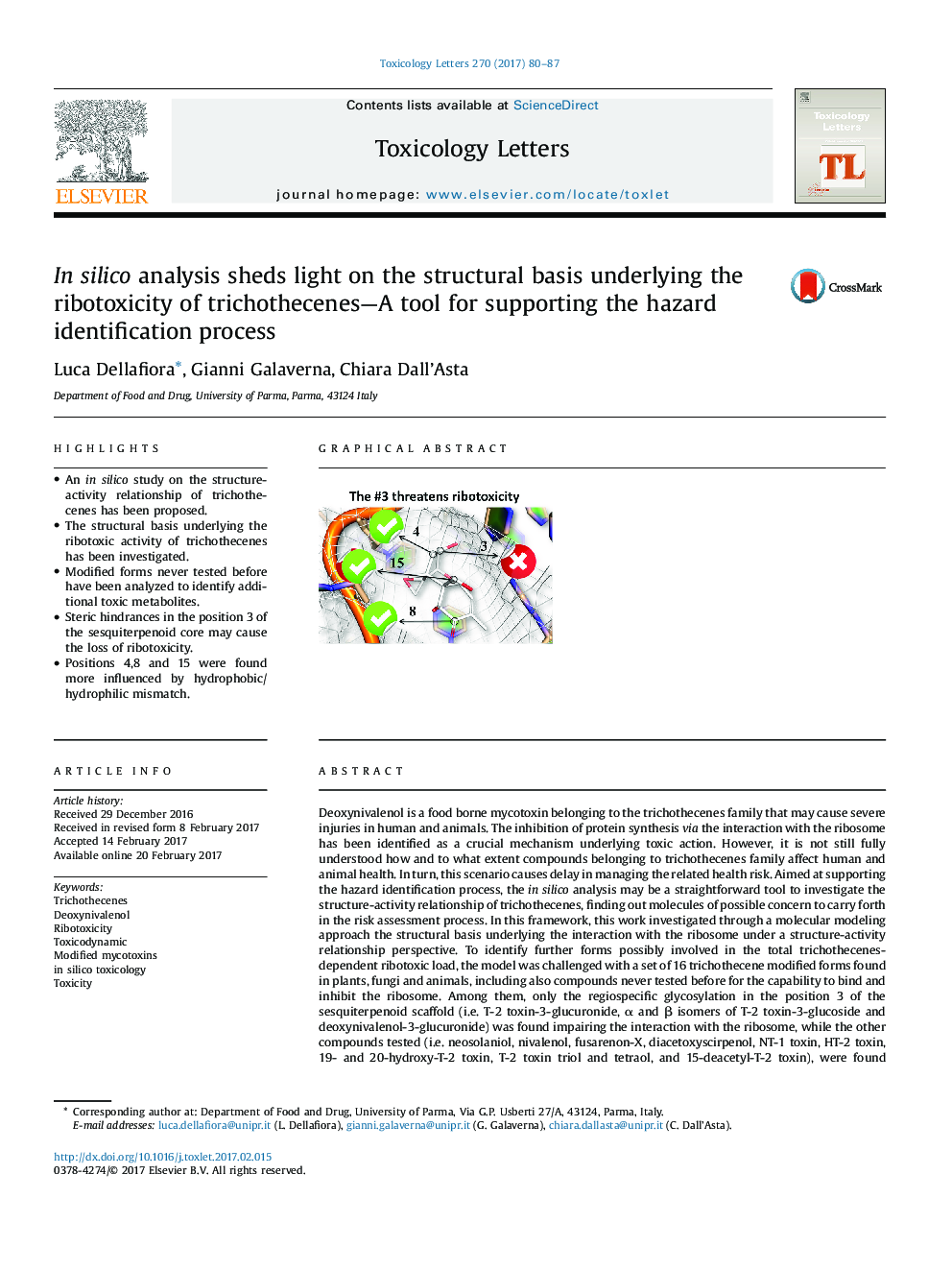| کد مقاله | کد نشریه | سال انتشار | مقاله انگلیسی | نسخه تمام متن |
|---|---|---|---|---|
| 5562154 | 1562603 | 2017 | 8 صفحه PDF | دانلود رایگان |
- An in silico study on the structure-activity relationship of trichothecenes has been proposed.
- The structural basis underlying the ribotoxic activity of trichothecenes has been investigated.
- Modified forms never tested before have been analyzed to identify additional toxic metabolites.
- Steric hindrances in the position 3 of the sesquiterpenoid core may cause the loss of ribotoxicity.
- Positions 4,8 and 15 were found more influenced by hydrophobic/hydrophilic mismatch.
Deoxynivalenol is a food borne mycotoxin belonging to the trichothecenes family that may cause severe injuries in human and animals. The inhibition of protein synthesis via the interaction with the ribosome has been identified as a crucial mechanism underlying toxic action. However, it is not still fully understood how and to what extent compounds belonging to trichothecenes family affect human and animal health. In turn, this scenario causes delay in managing the related health risk. Aimed at supporting the hazard identification process, the in silico analysis may be a straightforward tool to investigate the structure-activity relationship of trichothecenes, finding out molecules of possible concern to carry forth in the risk assessment process. In this framework, this work investigated through a molecular modeling approach the structural basis underlying the interaction with the ribosome under a structure-activity relationship perspective. To identify further forms possibly involved in the total trichothecenes-dependent ribotoxic load, the model was challenged with a set of 16 trichothecene modified forms found in plants, fungi and animals, including also compounds never tested before for the capability to bind and inhibit the ribosome. Among them, only the regiospecific glycosylation in the position 3 of the sesquiterpenoid scaffold (i.e. T-2 toxin-3-glucuronide, α and β isomers of T-2 toxin-3-glucoside and deoxynivalenol-3-glucuronide) was found impairing the interaction with the ribosome, while the other compounds tested (i.e. neosolaniol, nivalenol, fusarenon-X, diacetoxyscirpenol, NT-1 toxin, HT-2 toxin, 19- and 20-hydroxy-T-2 toxin, T-2 toxin triol and tetraol, and 15-deacetyl-T-2 toxin), were found potentially able to inhibit the ribosome. Accordingly, they should be included with high priority in further risk assessment studies in order to better characterize the trichothecenes-related hazard.
258
Journal: Toxicology Letters - Volume 270, 15 March 2017, Pages 80-87
